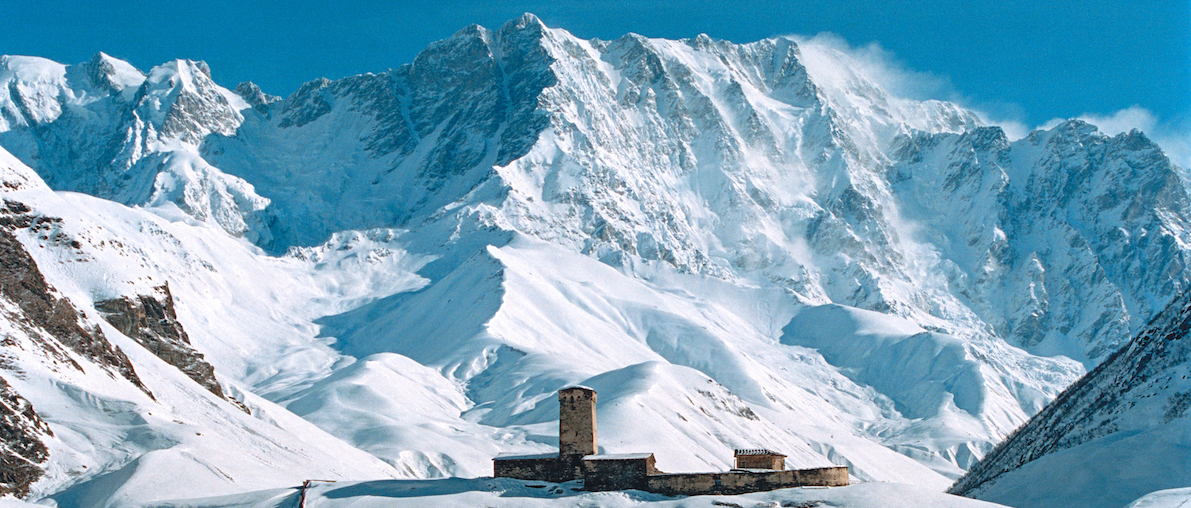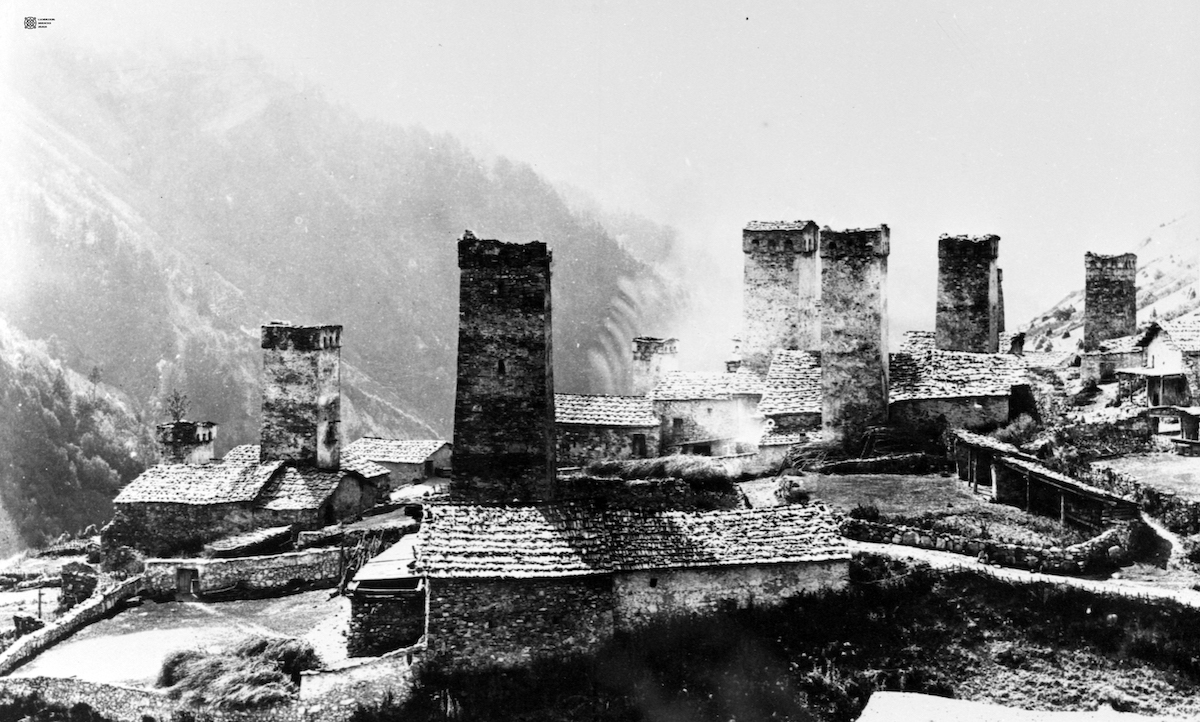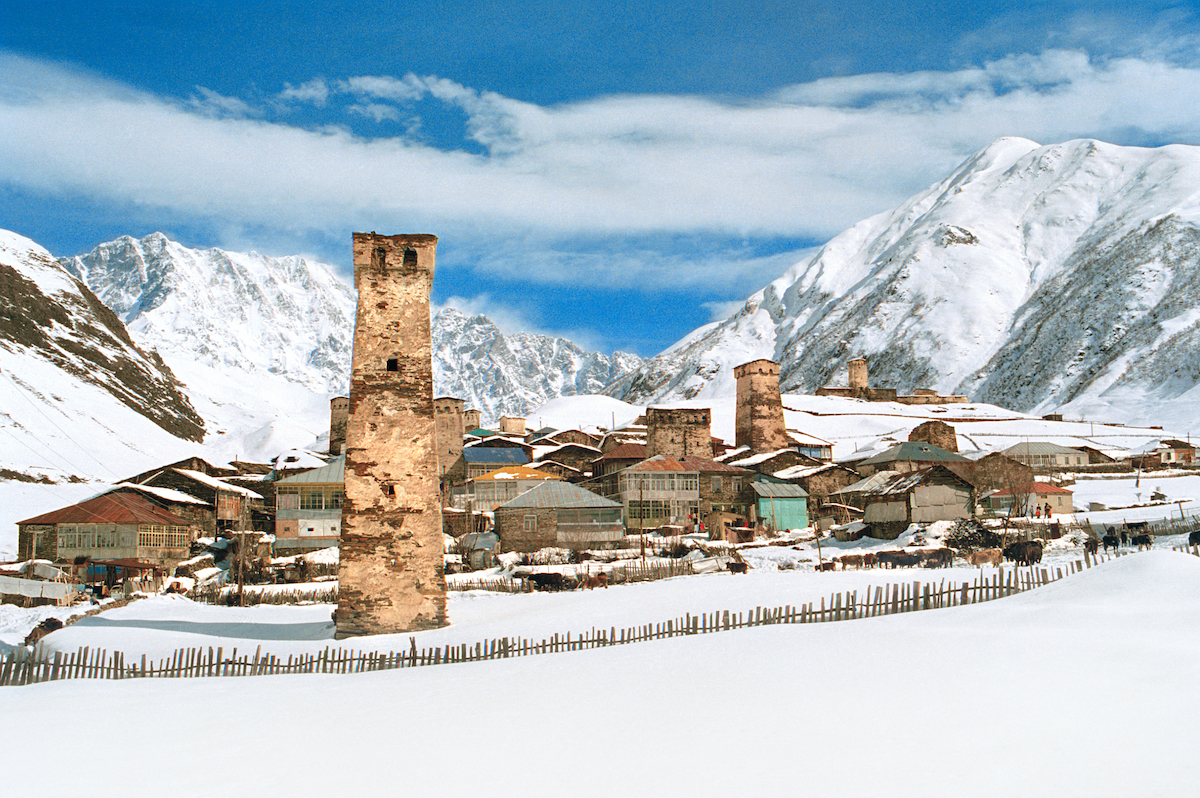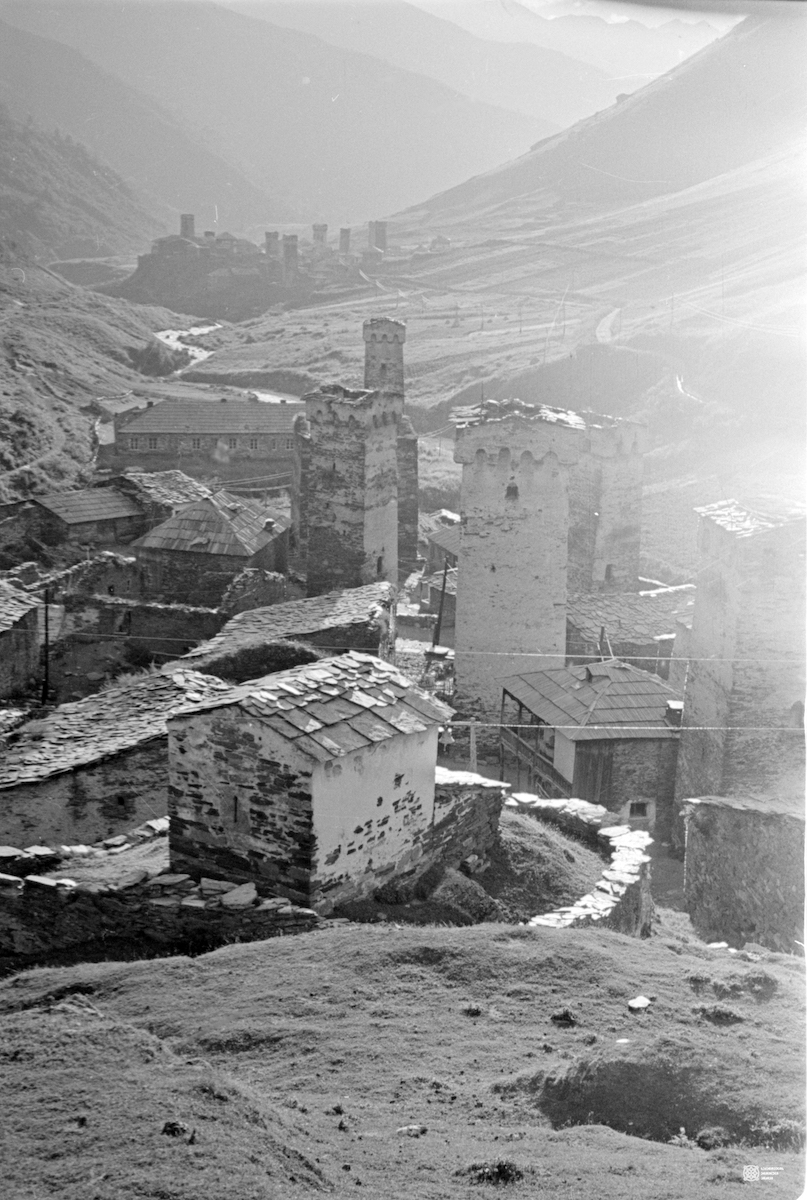
Feel free to add tags, names, dates or anything you are looking for
Given the fact that most of the Svanetian towers were built in the Middle Ages, one might also wonder why we compare these two constructions that originate from different architectural traditions.

Personal Blog by Dato Turashvili
Whenever I am in Mestia and come across a foreign visitor or tourist (in a cafe or on the street), I ask them directly if they have already seen Svanetian Manhattan. In response to this question, the eyes of most of the already surprised guests from overseas usually widen even more.
More often than not, the very same evening I take those who cannot imagine that skyscrapers were built on the bank of the Mestiachala River in Mestia several centuries earlier than those in New York, and as a rule show them the illuminated Lanchvali from the artist Bai Paliani’s yard.

Ushguli village, Svaneti, 1890
Lanchvali is the most beautiful part of Mestia. It is especially rich in towers; however, when I show these amazing towers, I ask both foreigners and Georgians to pay particular attention to Ratiani’s twin towers, because they are the main reason why Lanchvali resembles Manhattan. To be more correct, “resembled”, since following the horrific terrorist attack of September 11th 2001, the Manhattan World Trade Center (the so-called Twin Towers) no longer exists, and its analogue can now be seen only in Mestia.
Of course, the height of the old Svanetian towers is quite modest in comparison with modern American skyscrapers, but given the fact that most of the Svanetian towers were built in the Middle Ages, one might also wonder why we compare these two constructions that originate from different architectural traditions. The majority of the thousands of towers that were built by Svans over the centuries are five-story buildings, though occasionally we also encounter six- and seven-story towers that reach to more than thirty meters in height. A seven-story building for a medieval man was almost the same as a hundred-story construction is for a twentieth-century person.

Svaneti, Ushguli, 2019. Photo by Gia Chkhatarashvili
I remember when I arrived in New York for the first time and was on my way to Manhattan after having landed at Kennedy Airport: my jaw dropped when I saw from a bridge the two beautiful skyscrapers of the World Trade Center. I was truly shocked. No one knows how the towers in America or Asia that were built a century ago will withstand time and natural disasters; however, it is well known that most of the Svanetian towers have survived at least seven centuries, during which time neither avalanche nor landslide has managed to destroy any of them. Moreover, in 1876 three thousand Russian soldiers tried to destroy eleven of the towers in the rebellious village of Khalde, but for three weeks they could inflict no damage on them – even after having used cannons. Afterwards, when the village was finally conquered, the Russian officers ordered all of the towers to be destroyed with the use of gunpowder.
The village of Murkmeli is located eleven kilometers from Khalde. It is one of the districts of the Ushguli community, which at a certain point encompassed over seventy towers. If the Svans managed to build so many towers in just one village, it is not surprising that one foreign traveler called Svaneti “the country of a thousand towers”.
Chazhashi, another village built next to Murkveli in the Middle Ages, is protected by UNESCO as a unique world heritage site because of its fabulous complex. It truly belongs not only to Georgia, but to the entire world. Incidentally, in Svaneti, in this ancient cradle of Georgian heritage, contrary to all stereotypes the towers were not only built by men, but by women as well. The beautiful towers built by Svan women still adorn this amazing corner of Georgia.

Ushguli, Murkmeli village, Mestia district, 1972
This is why, for the above mentioned (and many more unmentioned) reasons, if it were my will, I would not hesitate to award the Svanetian towers with the title of the Eighth Wonder of the World.